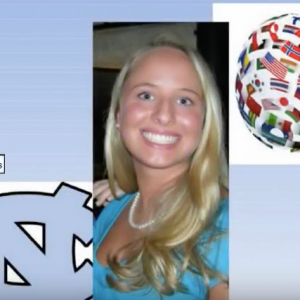Photo Story
Germany: A Fusion of Old and New
ID # 1263
When learning about Germany, students often see Germany through one of two perspectives: a historical perspective focusing on traditions and historical events such as the holocaust or a modern perspective focusing on “marvels” such as fast cars and Potsdamer Platz. Through a more combined approach, one can see that Germany presents a fusion of both old and new things to see and learn about. From castles and concentration camps to modern sculptures and interesting sites, this post shows a glimpse of what Germany has to offer. Enjoy!
Photo 1: Hof-Apotheke
Hof-Apotheke: In Germany, it is very common to see old buildings repurposed for modern use. This beautiful example of traditional architecture now houses a pharmacy on the ground floor and two families in the upper levels. The red and green flowers represent the traditional symbol of Lippe, the district in which this building in located. The Lippish rose has 16 stamens, each of which represents one of the 16 cities and municipalities within the district.
Photo 2: Kaiserschmarn
Kaiserschmarn: As in most cultures, food is an important part of daily life in Germany. Kaiserschmarn is a sweet dish which is especially popular in Bavaria. Similar in taste to a pancake, this dish is often topped with powdered sugar and served with fruit compote. Kaiserschmarn (“Emperor Mishmash”) is said to have been first prepared for Austrian Emperor Francis Joseph I.
Photo 3: Schloss Neuschwanstein (Neuschwanstein Castle)
Schloss Neuschwanstein: Located in southern Germany, Neuschwanstein Castle was commissioned by King Ludwig II of Bavaria. During his life, Ludwig II was blamed for Germany’s financial ruin due to the lavish castles which were built at his request. Ironically, these castles are now very profitable tourist attractions.
Photo 4: Arbeit Macht Frei (Dachau)
Arbeit Macht Frei (Dachau): The phrase “Arbeit macht frei” (Work liberates) was featured on the gates of many Nazi concentration camps during the Holocaust. This photo was taken at Dachau, a concentration camp near Munich, Germany. Dachau is now a memorial site and museum.
Photo 5: Reichstag and Memorial to the Murdered Jews of Europe
(Photo Credit: Ralf Schulze, Flickr User Name: rs-foto)
The Reichstag building, shown in the background of the photo above, is the meeting place of the Bundestag, or German parliament. The glass dome at the top of the building offers a 360-degree view of Berlin, making the Reichstag one of the most visited attractions in Berlin. The concrete slabs pictured in the foreground of the photo are part of the Memorial to the Murdered Jews of Europe. The sculpture is intended to evoke a sense of confusion by representing a system which claims to be orderly and systematic but has lost touch with human reason. This memorial, which serves as a connection to the past, provides an interesting juxtaposition to the Reichstag building, in which decisions of the future are made.
Photo 6: Berlin Cathedral & the Fernsehturm
(Photo Credit: Ralf Schulze, Flickr User Name: rs-foto)
Throughout Germany, the traditional and the modern can be seen existing alongside one another. In this photo, the traditional is represented by the Berlin Cathedral, which was built in 1905 and damaged by Allied bombings during World War II. The modern is represented by the Fernsehturm (television tower), which is the tallest structure in Germany. It was constructed in the 1960s and remains one of the most recognized symbols of Berlin.
Photo 7: Brandenburg Gate
(Photo Credit: Ralf Schulze, Flickr User Name: rs-foto)
Brandenburg Gate: Located near the center of Berlin, the Brandenburg Gate was commissioned in 1788 by King Frederick William II of Prussia as a sign of peace. During the revolutions of 1989, the gate became a symbol of freedom and the overall desire to unify both the city of Berlin and Germany as a whole.
Photo 8: United Buddy Bears Exhibition
(Photo Credit: Andrew C. Parnell, Flickr User Name: andrewcparnell )
United Buddy Bears Exhibition: The United Buddy Bears Exhibition, which originated in Berlin, Germany, includes more than 140 two meter tall fiberglass bears, each of which represents a country recognized by the United Nations. Each bear was designed and painted by an artist from the country which it represents. The exhibit promotes tolerance, international understanding, and peace among different nations and cultures. The bears, which have been on a world tour since 2002, are always arranged in alphabetical order according to language of the host country.
Created By
Stevie Mathis
Hello everyone! My name is Stevie Mathis and I am a senior at the University of North Carolina at Chapel Hill. I was born and raised in the small town of Marion, which is located in Western North Carolina. At an early age, I developed a passion for traveling and learning about other cultures. I’m currently following that passion by majoring in Global Studies (with a focus on nation-state politics and Western Europe) and minoring in History.








